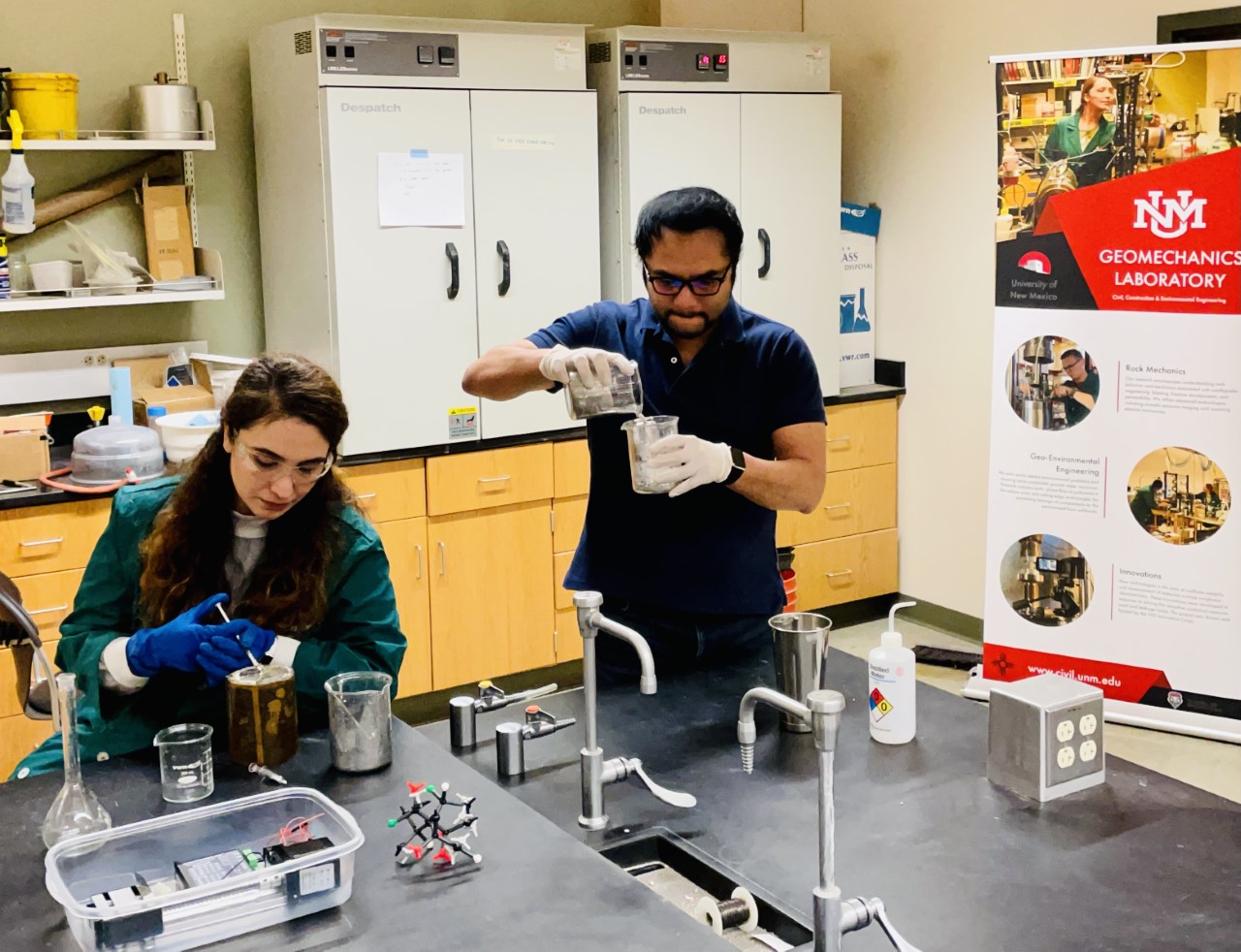Recent News
Ferenchak named chair of Transportation Research Board Pedestrian Committee
October 31, 2025
Ferenchak named APBP 2025 Research Professional of the Year
October 1, 2025
UNM professor to speak at TEDxABQ event
September 24, 2025
NSF funds research to investigate whether treated wastewater can help mitigate water scarcity in arid regions without compromising river ecosystem health
September 2, 2025
News Archives
Engineering students’ project for new metal alloy accepted into NSF’s I-Corps program
March 11, 2021 - by Kim Delker

A project led by students in the Department of Civil, Construction and Environmental Engineering at The University of New Mexico has received National Science Foundation (NSF) Innovation Corps (I-Corps) funding.
The project, called “A novel liquid metal of high density and low viscosity at room temperature,” is led by graduate students Ishtiaque Anwar and Mahya Hatambeigi, under the advisement of Professor John Stormont. The funding will go toward the further development of a new kind of metal alloy.
This metal alloy is liquid at room temperature, has low toxicity, is resistant to stress, and has shown the ability to conduct heat and electricity, all of which can increase its usage in a wide variety of applications. Such applications could include serving as a contact electrode for the electrical characterization of thin-film organic and semiconductor devices or as a possible coolant for fusion reactors. The new alloy is already in use for multiple research projects at UNM sponsored by the Department of Energy, Los Alamos National Laboratory and Sandia National Laboratories.
The NSF I-Corps program uses experiential education to help researchers gain insight into entrepreneurship, starting a business, or industry requirements and challenges. Through I-Corps training, researchers can reduce the time to translate a promising idea from the laboratory to the marketplace, engaging with industry; talking to customers, partners and competitors; and encountering the uncertainty and excitement of creating successful innovations. The primary goal is to take innovations out of the university laboratory to explore the commercial potential.
